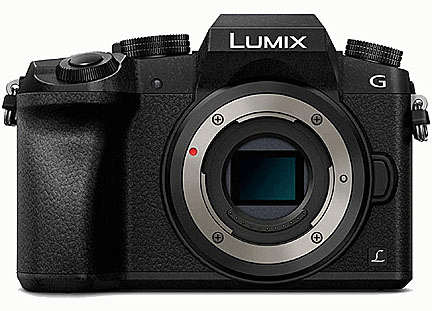

 




|

A Pure Digital Camera vs. a DSLR—
That's the Million-Dollar Question
Before comparing a pure
digital camera and a DSLR, you first have to know the difference.
 A pure digital camera is one in which light enters the lens and goes
directly to the image sensor where it’s converted to electronic signals that
are passed on to the camera’s media card. There are no mirrors to block the
signal and the lens is permanently mounted. All have a zoom lens of some
sort. And it’s possible to see the subject either in the viewfinder or on
the LCD screen. A pure digital camera is one in which light enters the lens and goes
directly to the image sensor where it’s converted to electronic signals that
are passed on to the camera’s media card. There are no mirrors to block the
signal and the lens is permanently mounted. All have a zoom lens of some
sort. And it’s possible to see the subject either in the viewfinder or on
the LCD screen.
 A DSLR or digital single-lens reflex camera, on the other hand, is a camera
that evolved from a 35mm single-lens reflex camera—essentially it’s a 35mm
SLR body with electronic insides. A DSLR operates using a mirror which
reflects the light up to the view finder, thus making it possible to see
through the lens. However, the mirror blocks the light from reaching the LCD
screen, so you cannot compose your photo using it. Newer DSLRs feature a
“Live” setting which enables you to fold down the mirror, thus allowing you
to use the LCD screen to view your subject. It took over 25 years for camera
manufacturers to realize this and make a correction. In addition, the lens
on a DSLR isn’t permanently mounted and can be interchanged with others. A DSLR or digital single-lens reflex camera, on the other hand, is a camera
that evolved from a 35mm single-lens reflex camera—essentially it’s a 35mm
SLR body with electronic insides. A DSLR operates using a mirror which
reflects the light up to the view finder, thus making it possible to see
through the lens. However, the mirror blocks the light from reaching the LCD
screen, so you cannot compose your photo using it. Newer DSLRs feature a
“Live” setting which enables you to fold down the mirror, thus allowing you
to use the LCD screen to view your subject. It took over 25 years for camera
manufacturers to realize this and make a correction. In addition, the lens
on a DSLR isn’t permanently mounted and can be interchanged with others.
 DSLRs also have limited viewing angles: Cameras that offer an LCD preview
let you hold the camera at various angles to compose your pictures. With
many DSLRs, you must have your eye right up to the viewfinder to line up
your shot. This particularly inconvenient when shooting macro images. DSLRs also have limited viewing angles: Cameras that offer an LCD preview
let you hold the camera at various angles to compose your pictures. With
many DSLRs, you must have your eye right up to the viewfinder to line up
your shot. This particularly inconvenient when shooting macro images.
Many lenses, especially longer zoom and specialty ones, are extremely
expensive for DSLRs. Most DSLRs crop the perspective of each lens, so when
you attach a regular super-wide-angle lens, it becomes a moderately wide or
normal lens. And although you can purchase an ultra-wide lenses made
especially for a DSLR, those lenses aren’t cheap.
 Each time you swap lenses on your DSLR, dust and dirt have the chance to get
inside and eventually settle on the sensor. You have to clean the sensor
with a blast of air, a brush, or a swab moistened with a cleaning fluid. But
each time you do, you run the risk of damaging it. A damaged sensor is a
death knell to a DSLR. Each time you swap lenses on your DSLR, dust and dirt have the chance to get
inside and eventually settle on the sensor. You have to clean the sensor
with a blast of air, a brush, or a swab moistened with a cleaning fluid. But
each time you do, you run the risk of damaging it. A damaged sensor is a
death knell to a DSLR.
While pure digital cameras have a ability to shoot videos, DSLRs cannot.
And though newer, more compact DSLRs weigh less, most of the heavy duty ones
weigh upwards of 10 or 15 pounds, including the lens—more if you have a long
zoom lens attached.
Lastly, since all pure digital cameras have permanently mounted lenses,
there’s no need for you to lug a bagful of camera bodies and lenses around
with you. This is especially important if you plan on doing lots of travel
or street photography.
And while DSLR camera manufacturers will argue that their cameras produce
superior images, today’s digital technology and high-quality optical lenses
level the playing field. Even smartphone cameras produce excellent quality
photos.
|


